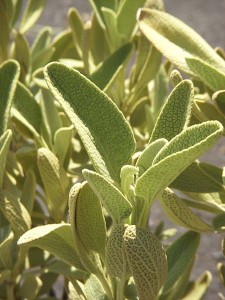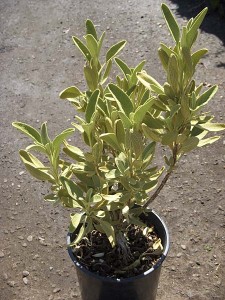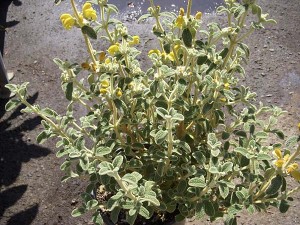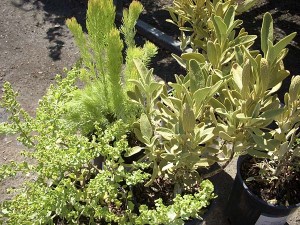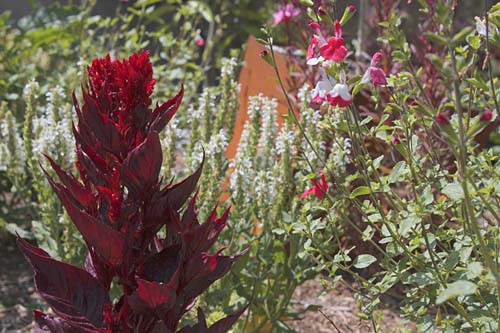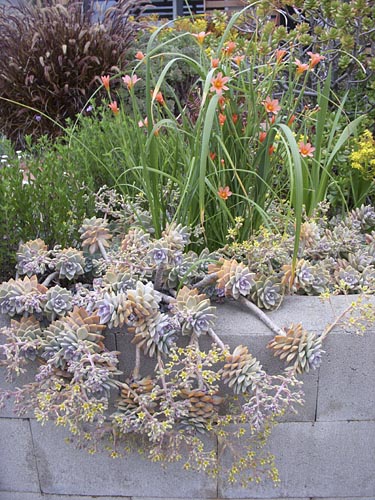The late-December light was fading when I headed to the wild and wonderful plants that make up the Huntington’s Desert Garden. The garden dates back many decades and features some immense specimens the likes of which you’ll almost never see. But what I love most about the garden is that it incorporates these great plants into landscapes that both honor the plants and use them in striking combinations.
Many aloes were blooming with their dramatic spikes of hot, bright colors. The theatrical lighting helped to make some of the scenes even more dramatic.
(Be sure to click onthe third image to enlarge it. In its unearthly weirdness, it’s got to be one of my favorite garden photos I’ve ever taken.)
One zone of the garden focuses on plants you’d find in California. Here a creosote bush serves as a screen for a radiant gray-white agave.
And this scene employs the coastal and Channel Island buckwheat, Saint Catherine’s lace (Eriogonum giganteum)–a plant that technically doesn’t come from a desert–with other dryland plants. The gray-green foliage on all of them helps to unify this diverse planting.
The Huntington is in a warm subtropical area just east of Los Angeles. That doesn’t mean that it’s warm enough for all of these plants. Patio heaters of the kind that you see outdoors at restaurants keep plants warm at night in one area of the garden. (These are the frigid depths of December, after all.)
Now, as much as I was trying to focus on the overall landscape, I have to share a few photos of individual species that caught my eye.
Looking up at a very large Yucca filifera from Mexico…
(There’s an extremely similar shot of the exact same plant on the Germanatrix’s post on her visit to this same garden at the end of November. Check it out: here.)
Two tall palms with immense tree aloes, Aloe barberae. At the Huntington the species is identified as A. bainesii, but the taxonomists have had a change of heart. I have two of these in my little front yard, the tallest of them still under twenty feet but still impressive at that size. The writeup on this plant says it can hit fifty feet or more. The Huntington specimens are just about there, I’d guess.
A dynamic and lyrical tangle of leaves on several plants of the variegated form of Agave americana… (Homage to somebody… later Willem de Kooning? Franz Kline?) Agaves with their perfect rosettes seem to appeal to the part of our brains that appreciate symmetry and order. This planting subverted the expected into a beautiful mess.
A tall, dense stand of Cleistocactus straussii…
As we left the Huntington the light that had made the Desert Garden extra-interesting was coloring up the flanks of Mount Wilson and the the rest of the San Gabriels.
Not far away from the Huntington is Pasadena, the site of the annual New Year’s Rose Parade, which should be getting under way not long after this post hits the web. (Okay, it’s sort of a lame way to try to segue this post to the topic of New Year’s Day, but–hey!–I had to give it a try.)
Happy New Year’s to all of you, and best wishes for a healthy and prosperous year filled with amazing botanical highlights.


















